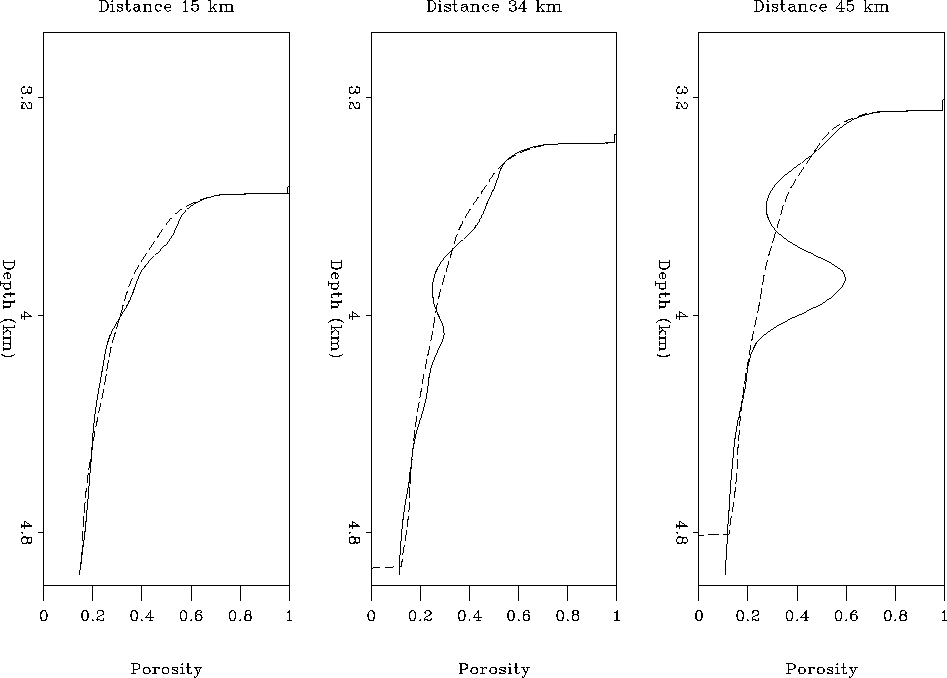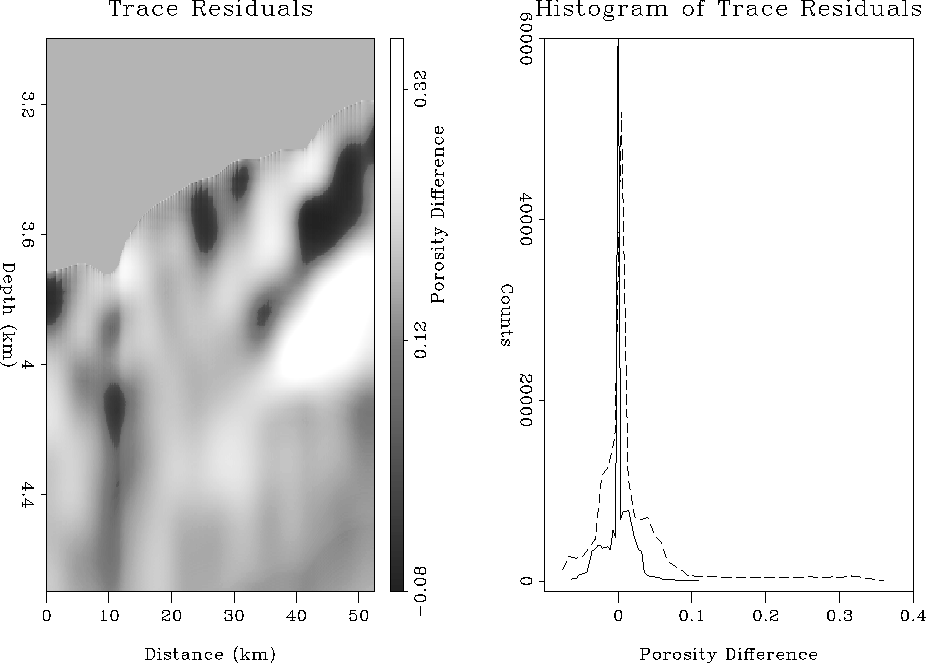 |
Figure 5 Baseline porosities (solid lines) overlain by the averaged normal brine porosity trend (dashed line).
In this section we determine the average normal porosity trend from the first part of the seismic section (0-25 km) which does not display a prominent BSR. We assume that this part of the sediment is purely brine saturated. Therefore, the previously determined baseline porosities are representative of the actual brine porosities. Furthermore, we consider the lithology to not vary laterally. Consequently,we can average the baseline porosities to obtain an averaged normal brine porosity trend. This latter assumption is consistent with results from drilling which showed rather uniform background sediments. The so determined average normal porosity is overlain with the previously obtained baseline porosities in Figure 5.
 |
The first panel shows the misfit between the average normal brine trend and the local trend. The hydrate anomaly displayed in the middle panel does not deviate much from the average porosity trend. Its magnitude appears to be the same as the misfit between the average and local brine porosities in the left panel. This already suggests that some of the anomalies caused by the presence of hydrate cannot be separated from the residuals caused by actual lateral variations in the brine porosities. The third panel presents both a clear hydrate and gas-related anomaly. The latter is significantly larger than the one caused by the hydrate. This yields a higher detectability of the areas of gas saturation.
 |
Subtracting the normal porosity from the baseline porosities results in the residual section displayed in Figure 6. The gas saturated section underneath the BSR yields a very strong positive residual, as expected from comparisons of the porosities shown in Figure 5. The residuals caused by the presence of hydrate, however, appear to be of the same magnitude as the general misfit between the average porosity trend and the local brine baseline porosities. The histogram shown in the right panel makes this more obvious. The solid line represents the misfit between the average brine porosity and the local brine porosities between lateral distances of 0-25 km. It is a measure of the uncertainty in the residual measurements. The dashed line shows the trace residuals in the zone between 25 and 55 km distance. The negative residuals which contain those caused by the hydrated sediments do not deviate much from the uncertainties imposed by the brine saturated section. This makes a clear separation of residuals caused by the presence of hydrate and residuals caused by lateral brine porosity variations difficult. In our investigation, we choose the hydrate residuals smaller than -0.03, and the gas related residuals larger than 0.08.
The fact that the local brine residuals have approximately the same magnitude as the hydrate-related residuals might be caused by several factors. First, the necessary porosities were directly inferred from the seismic interval velocities. Any error within those velocities will be directly mapped in an error in the porosities. By averaging the porosities, any error will be propagated and summed up. Furthermore, the sediments might not be quite as uniform as expected. Consequently, an average brine porosity trend might not represent the local brine porosities adequately.